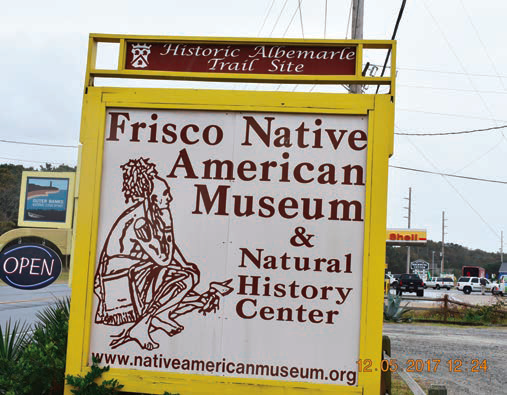In the museum there are many displays which show the way of life for Native Americans. Displays like; art work, pictures of animals, weapon and combat, natives and food, dresses, police and peace medals, pottery, code talkers, weaving, canoes and kayaks and much more. There is a gift shop in the museum which is called, Now Natural History Center. It features work from over 30 Native American artists and from where you can buy unique handmade crafts. They ship all over the world. There is a natural trail in the facility too.
Frisco Native American Museum & History Center is a nonprofit educational foundation created for the purpose of preserving Native American artifacts, art, culture, and language.
It can also teach people about native perspective and how to treat the Earth, said MS Ronnie Francisco, Assistant director of the museum. This Museum is located on Hatters Island on the Outer Banks of North Carolina.
turtle emerged to support plant and animal life on its back. This teaching tells us, “where Turtle goes, there is life and water is precious”. Since we are dependent upon the earth, we must treat our ‘Island’ home with respect and honor all of the beings in the natural world. As you walk among the exhibits, look for teachings from “Turtle Island “indicated by the turtle symbol.
MS Amber Roth of the museum said, “We have a lot of visitors that say we have a completely different feel. Instead of it being a very sterile, far away from you feel, the culture feels more alive.
In the museum there are many displays which show the way of life for Native Americans. Displays like; art work, pictures of animals, weapon and combat, natives and food, dresses, police and peace medals, pottery, code talkers, weaving, canoes and kayaks and much more. There is a gift shop in the museum which is called, Now Natural History Center. It features work from over 30 Native American artists and from where you can buy unique handmade crafts. They ship all over the world. There is a natural trail in the facility too.
The earlier inhabitants of the North Carolina Outer Banks were Hatters Indians tribe of Native Americans.
(The author is Chesapeake VA based journalist. He can be reached at sdhillon@hotmail.com)
